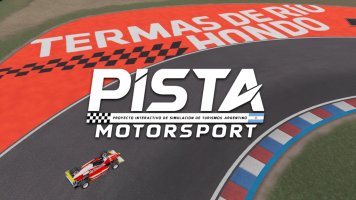Mr Latte
Premium
Very few with sim rigs will go to such lengths but yes I believe there are some with an interest to push things a bit further with tactile. Some may appreciate doing more with cable management and seek to use quality connectors or interconnects.Thanks again for posting your setup. I finally was able to spend some time on a x32 and it wasn’t as confusing as I thought it would be.
I still have some questions if you wouldn’t mind. I also understand your setup isn’t a typical use case and things can be done for less money. However, the appeal of clean cable management and full control of the audio is massively appealing to me.
For my seats 8xEXC I will use Banana based connections and some form of AV style connection plate. Yes I want it to look professional/tidy and be of excellent quality. I am not a spring clip type of guy for my audio, even though it would work fine. Part of the plesure in building my rig that is so audio/tacile focused will be on going the extra mile with cabling etc.
For the Seat, I want a tidy simple single cable from the back of the seat for the 8 EXC. I have shared some ideas with Mark. I think after looking into things it does not suit to have the connection box on the seat itself. So the solution I like best has yet to be decided.
1. The S32 makes it possible to have 32 Inputs and 16 Mix Buses via XLR. The reason for the 32 inputs is so that I can (if I want) have individual "Simhub Effects" being output as/on individual channels. So 4x 8 channel soundcards (including 7.1 audio). I have not decided yet which approach or option may work best for me. Only when I have the new section of the rig built and the tactile re-installed can I test more the potential with the options possible.1. Are you running the s32 because of the 16 balanced outputs? For cabling I assume you’re running a balanced XLR to bare wire (then installing your choice of connector).
2. Do you have a preference on connectors for the exciters and the BK’s? I picked up some gold plated female spade and banana plug connectors, but wasn’t sure if there was a better option.
3. With all the motion cabling and possible interference, I’m assuming running balanced cables throughout would be the safe choice?
4. I’m assuming I don’t need to use the DSP function in the amps and that would be setup in the mixer?
5. For the exciters, are you using the x32 aux sends to the ha6000, or are you solely controlling it from the ha6000?
Why would I do that?
It means all the mixing can be done within the mixer, not needing to mess around with altering Simhub outputs for different transducers/channels. With each effect type treated as an individual input, the effect could have its own EQ or you could just decide to EQ at the Mixbus stage.
I can very easily just go to a Mixbus and manage the slider volume for any of the effects (32 inputs) to output on whatever transducer unit. We can then do other things you cant do in Simhub, like "Solo" a specific effect without having to turn off all the other effects, and we can more easily mute effects. It is also possible to create DCA groups so that you could in theory have all "engine effects" or "bump" effects placed as a DCA letting you control "a user-selected group" with one gain slider control. On top of this, you can create "Mute" groups, to easily mute any selection of effects you wish. So yes, such mixers, can give you much more control with easier and faster access. Then also bringing the benefits of being able to use pro plugins for metering, monitoring, or controlling the audio how you want.
What it will not do and is still necessary for defining what gain settings you may apply to the individual effects layers. So an effect you have using multiple layers, what this generates is determined from the levels of all those frequencies and the combination of them represents the effects generated sensation. I refer to it as the "output mix" for an effect. Some people like to tweak at these, while others set them to find what they like and leave them.
2. I have a couple of solutions in mind to help tidy cabling for multiple exciters. It will be covered in a tutorial I will release. I have looked at all the possible options. The plan is to release this when I have the new effects also ready for the 8-way EXC on the back of a seat. I want to offer this as a solution, ready to go and with effects to enjoy. Not rushing with this as its basically bringing and presenting what are my own abilities/preferences with tactile and effects creation over the last 2 or so years.
For my own connection of the larger units (BK LFE / TST / Earthquake) my rig will have installed. This will be a combination of at least 14 units. I have purchased "tour grade" 4x 4-Way SpeakON distributors for these. So the connections go into the amps at the back of the rack but each 4 units is only 1 cable back to the distributors that are installed on the rig. 4 transducers plug into each distributor. This makes it very easy to ever disconnect the transducers or the cable from the amps. I had cables specially made that again used the tour grade *metal connections.
3. Most cable connections from this level of hardware will be Balanced 6.3mm or XLR. I do not believe a 3.5mm soundcard offers balanced outputs. Best to keep the hardware away from the rig within its own rack or installation place.
I went with a pro level (16 way USB) hub which then just gives a single cable back to the PC. Better this cable is longer and keep the amps/interconnects close. I have installed 3 main power conditioners/switchers for my audio and rigs hardware. These should also help with a clean electrical signal. However I do not envisage I will buy into motion, but I will buy a harness.
4. Depends on how many outputs you have and how many units you may need to use. If you struggle with the number of MixBus outputs you have (1 for each unit). One way to save on outputs is to use the Behringer MS8000 to duplicate XLR outputs and be creative.....
Scenario:
BK & TST are being used. You would combine the output for the BK and the output for the TST (all the frequencies from effect layers for both types of units) Then you would duplicate this output for 2 channels. On the amplifier, we can use the "Crossover" feature to determine from the combined output what we need for the BK for the lowest bass (under 40Hz). Then what do we need for the TST, so it works from @30Hz up and to whatever range you want? You can then also apply other DSP to determine the operation of the unit for these channels or if using this method.
What you are doing here isnt quite the same as determining what exact effects goto a BK and what exact effects go to a TST and then these on their individual outputs. However, it is possible to achieve good operational results with a crossover and making a BK/TST operate as a tuned set. I called this "Dual Role" as it outperforms as a combination the output operational abilities of any single transducer I have used.
My own rig will use 6x BK/TST combos for directional and g-force based effects. They should deliver a very powerful but also very detailed level of immersion. Positional effects are then also enhanced directly into the users torso with upto 3x pairs of stereo EXC on the seat operating however we want to apply specific effects. We can have individual effects to each pair or more advanced effects created that apply musically matched frequencies to generate a sensation from 3 pairs of units over more body regions that we cannot achieve from one. *(Hundreds of hours testing with effects creation options)
5. For my own rig I will use the 6 AUX out but also have another set of outputs for the additional 2 more EXC (8) I will place on the back of the seat. So far the new approach in the effects I am building with the 8 EXC is very impressive. Yes, its possible to then apply also BK/TST but I am confident what is achieved with the 8 EXC and this new method not used before for creating effects will deliver a level of tactile, thats also quite affordable as a solution but one that will perform beyond what people are currently experiencing.
The HA6000 lets us send the "Game Audio" to any or all of the EXC. We then also apply or alter the mix between Simhub/Game audio how we wish. If a user wants an 8-way multi-stereo game audio-tactile, then they can have it. The only drawback at the moment is that "Game Audio" needs EQ applied to make the most of what it can offer for tactile.
So we need to apply either software or hardware solution. We can do this easily with a mixer/DAW for the desired outputs. Although for others, the easiest way, may be to duplicate the windows primary audio out and have EQ applied differently for speakers/heaphones or tactile. This output can then be sent to the HA6000. Here we can apply some more boost but of course, some caution or care on using good settings is needed.
I am currently working on this and looking at how a user with only a soundcard & HA6000 can make use of this. Note that HA6000 can work with stereo or mono inputs so how it is used and its operation depends on the cabling TS or TRS.
HA6000 is not an amplifier in the sense of the EXC, I am using it for its mixing and tone controls (as well as leds). The EPQ 304 is the amp I recommend (replace fan) for EXC. I have actually purchased 4 of them to power my TST as well as I will apply DSP for my TST via the DAW on this configuration I use.
Last edited:













